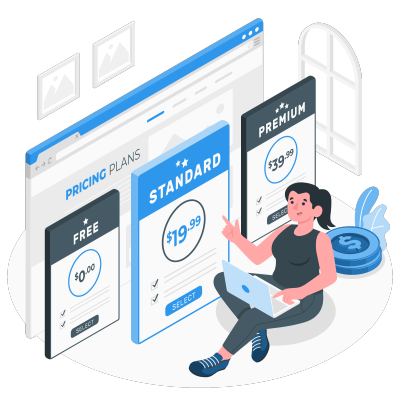When you’re starting your own clothing line, one of the most important decisions you’ll make is how to price your items. There are a few different pricing strategies you can use, and it’s important to choose the right one for your business. In this article, we’ll discuss four common pricing methods and how to calculate your expenses and profits.
Choose A Pricing Strategy
The first thing you need to do is choose a pricing strategy. There are three main methods you can use: backwards pricing, absorption pricing, and keystone pricing.
- Backwards Pricing Method: The backwards pricing method is when you start with how much profit you want to make per unit and work backwards to calculate your costs. This is a good method to use if you have a limited budget and need to make sure you’re making a profit on each item.
- Absorption Pricing Method: The absorption pricing method is when you include all of your costs (fixed and variable) in the price of the product. This is a good method to use if you have a lot of overhead costs that need to be covered.
- Keystone Pricing Method: The keystone pricing method is when you double your costs to determine the price of the product. This is a good method to use if you want to make a 50% profit margin on each item.
Add Up Your Expenses
No matter which pricing strategy you choose, you need to make sure you’re covering all of your costs. There are two types of costs you need to take into account: fixed expenses and variable expenses.
- Fixed Expenses: Fixed expenses are costs that stay the same every month; such as rent, utilities, and insurance.
- Variable Expenses: Variable expenses are costs that change every month; such as materials, labor, and shipping.
To calculate your costs, you’ll need to add up your fixed expenses and your variable expenses. Then, you can use one of the pricing strategies listed above to determine how much to charge for your products.
Factor In a Retail Markup
If you’re selling your clothing to retailers, you need to factor in their markup. Most retailers will want to make at least a 40-50% profit margin on the items they sell, so you’ll need to adjust your prices accordingly.
To do this, you’ll need to know how much the retailer is willing to pay for each item. Then, you can add your own markup on top of that. For example, if a retailer is willing to pay $10 for an item, you could add a 50% markup and charge them $15 per unit.
Determine Your Profit Margin Goal
Once you’ve calculated your costs and determined how much to charge for your products, you need to set a profit margin goal. This will help determine how many units you need to sell in order to make a profit.
For example, let’s say you have a goal of making a 20% profit margin. If your costs are $100 per item, you will need to sell the item for $120 in order to make a profit.
You can use this profit margin goal to price your products and make sure you’re earning a profit.
Calculate Your Prices
Once you have factored in all your expenses and determined how much you need to charge for your products, you can calculate your prices.
If you’re using the backwards pricing method, start with how much you want to make per unit and work backwards to determine your costs.
If you’re using the absorption pricing method, include all of your costs in the price of the product.
If you’re using the keystone pricing method, double your costs to determine the price of the product.
Once you’ve calculated your prices, you can start selling your clothing line!
Conclusion
Pricing your clothing line can seem daunting, but it doesn’t have to be. By following these steps, you can make sure you’re setting prices that will cover your costs and ensure that you earn a profit.

